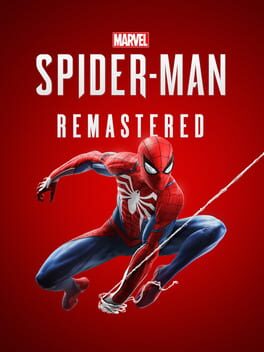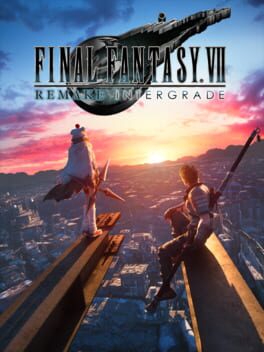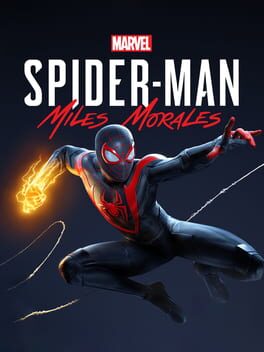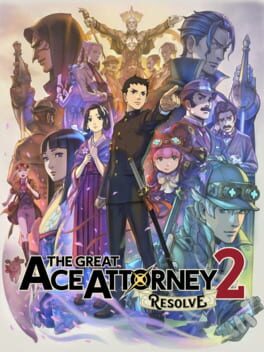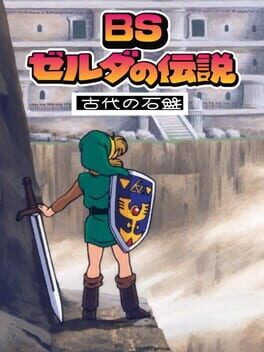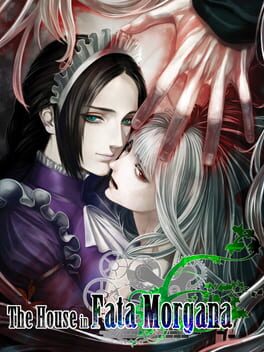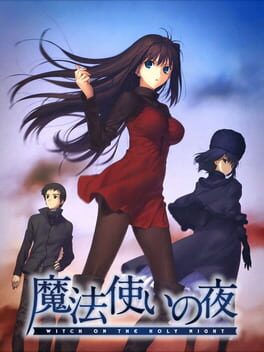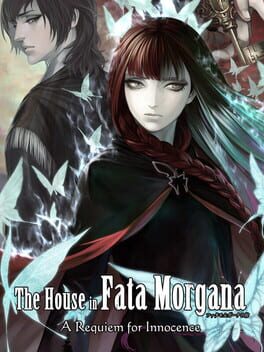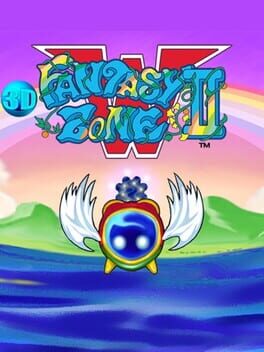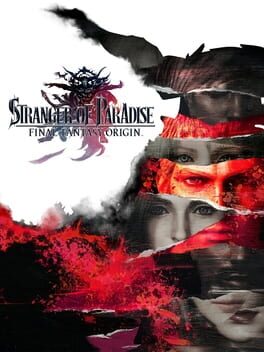guiltyparty
Thanks to its slick traversal when you're slinging around Manhattan, Spider-Man feels best to play in short bursts to do in-game "busy work," whether it's finding a tower, nabbing a backpack, spotting black cats, or stopping a crime-in-progress. While the gameplay loop begins to show its seams in the back half of the main story, where encounters are at their most tedious, it's fine to play mindlessly.
Despite being the sole playable character, venturing with the rambunctious Yuffie feels both rich and satisfying, thanks to her unique ninjutsu and her synergy — to say nothing of her chemistry — with the newly introduced Sonon. It's a fairly short romp, especially if you're not going out of your way to play Fort Condor, but it has all of the bits and bobs that made the base game so exhilarating: a spectacular soundtrack, dynamic cutscenes with clean gameplay transitions, and truly remarkable character writing.
2021
Dread is an astoundingly tight package, sporting snappy movement options (in a map that allows you to take full advantage of them) and a dynamic combat system that builds well upon the mechanics of the previous entry, Samus Returns. While the survival-horror element creates an interesting cat-and-mouse between Samus and the E.M.M.I. units, the structure of the zones encourages a response that's more reactionary than tactical, which often makes these encounters more tedious than tense.
2018
The "rogue-lite" structure feels like a solid fit for Supergiant, a clean shift off the heels of Bastion and Transistor. It's a neat little game with a menagerie of kooky characters, and the gameplay loop is enjoyable enough that it'll usually squeeze one more run out of you, just when you think you're about to put it down.
While it leads to a few pacing hiccups that can impact the immersion, the audio drama/game hybrid model is an interesting concept, opening up several opportunities to muck around Link to the Past's overworld and hunt for time-based events. Perhaps the biggest perk comes in the form of its high-quality soundtrack: the remade music here is killer, even if the tracks can't sync to your location. None of the hour-long four episodes are especially challenging - there's nothing that will keep anyone stumped for very long, for the sake of ensuring that the main quest is completed within the time limit. It's a nifty piece of Zelda history, though, especially if you're a fan of LttP.
2022
2022
The mission-based campaign sports plenty of mindless stages that one can generally blitz through in less than three minutes, and none of its bosses require any particular ingenuity to clear. However, some of the puzzles actually take a bit of exploration or trial-and-error to crack. When the level's gimmick removes or limits your options, you're often strapped in for a tedious ride — but several missions require you to gain ground by taking advantage of a weapon's unique characteristics, and these "eureka" moments feel more rewarding to reach.
2012
"...I thought with certainty, This is a masterpiece. But it’d probably be impossible to explain how amazing it is to ten people and have all ten of them understand. ... Once you’ve been shown something like this, you can’t ignore it. It felt like peeping on someone’s secrets, like I’d seen something I shouldn’t have."
"I had the casual goal of 'finding some time to write a novel,' and I didn't notice my dream was slowly being buried, while I lived idly, day after day. Neon Genesis Evangelion was what gave me a big push in the back...or should I say, kicked me and sent me flying. ... I supposed Eva had the charm and enthusiasm that makes people think, I have to do something. Instead of idly saying 'when I have time next time,' I thought I should at least write something. And so, the result of this sudden momentum was Mahoutsukai no Yoru."
"Make yourself comfortable. We've kept you waiting long enough. Without further ado..."
Brilliant. A story that shines, like the brightest star in the night sky.
"I had the casual goal of 'finding some time to write a novel,' and I didn't notice my dream was slowly being buried, while I lived idly, day after day. Neon Genesis Evangelion was what gave me a big push in the back...or should I say, kicked me and sent me flying. ... I supposed Eva had the charm and enthusiasm that makes people think, I have to do something. Instead of idly saying 'when I have time next time,' I thought I should at least write something. And so, the result of this sudden momentum was Mahoutsukai no Yoru."
"Make yourself comfortable. We've kept you waiting long enough. Without further ado..."
Brilliant. A story that shines, like the brightest star in the night sky.
As a complete package, FataMoru didn't hit for me in the same way that it's so clearly lit a fire in other readers. However, I can certainly appreciate why a tale like Michel and Giselle's strikes a chord in so many — and I came away from the base game glad that its narrative exists for people to resonate with. There are some truly brilliant points of presentation in this story, and for better or for worse, it never shies away from saying the quiet parts out loud.
I'm a bit more lukewarm on the fandisc's main plotline — and the necessity of the story it's telling, retreads and all. There are bits of that sharp presentation that are still very much on display here (one scene from the main game, now framed from another character's point of view, proves particularly wicked) but there's not much here to really sink your teeth into, not so much to justify the length. Inevitably, where your feelings fall on Another Episode will depend on how you, as a reader, feel about Jacopo's character.
I'm not crazy about him, myself.
I'm a bit more lukewarm on the fandisc's main plotline — and the necessity of the story it's telling, retreads and all. There are bits of that sharp presentation that are still very much on display here (one scene from the main game, now framed from another character's point of view, proves particularly wicked) but there's not much here to really sink your teeth into, not so much to justify the length. Inevitably, where your feelings fall on Another Episode will depend on how you, as a reader, feel about Jacopo's character.
I'm not crazy about him, myself.
2015
A very tight (and fairly tough!) horizontal shooter with an ultra-vibrant coat of paint that especially pops on the 3DS hardware. An obvious labor of love, and worth the time of anyone with an appreciation for arcade shooting games. Of particular note is the endless "Link Loop Land" variant, which scratches the NiGHTS into Dreams itch that I didn't realize I had. Delightful.
Definitely rough around the edges, particularly in the level design, but the combat here is surprisingly robust and highly fluid. Being able to switch between an enormous variety of classes from across this sprawling franchise is a treat for any fan. Your mileage will vary with regard to the character writing and plot, but there's heart to be found here.
2023
Unfortunate that SEGA is asking $60 for a WiiWare-quality title, but here we are.
The gameplay of this one is a real mixed bag. The stages are typically serviceable, if fairly uninspired on their face. More often than not, they feel the need to throw a gimmick at you in their second act, just to make sure you're not falling asleep at the wheel. The jungle zone is hidden by a fog of war that narrows your view, the factory stage has a self-destruct timer in the background that needs to be reset by hitting certain switches — hindrances that discourage you from seamlessly coasting along the best path, while disincentivizing taking your time exploring wide areas. Overall, this is a tough balancing act to pull off, and Superstars rarely handles it with grace.
Thankfully, giant rings aren't too tricky to track down this time around, in part because the game wants you to play around with the powers you get for clearing special stages. Those stages themselves are among the franchise's jankiest (particularly the fifth one), but they're generally inoffensive. These new powers are situationally useful at best and actively intrusive at worst, especially on the Switch, where they're liable to tank the FPS. More likely than not, you'll find an ability you like and forget that you have it until you're in an annoying spot — or, maybe you'll grab the water ability, only to find that it has little use outside of Lagoon City. Mileage varies.
There are also four unique stages that force you to play as each cast member. While these seem tailored towards their character's platforming on paper, they often don't do enough to lean into what makes their movement options unique — Knuckles's stage puts too much emphasis on scaling walls, and not enough emphasis on his glide. You get the sense that with the emerald abilities, any of the characters would be able to clear these stages (and to an extent, this is proven post-credits). The addition of a playable Amy is welcome, and her double jump is immensely practical, both in navigating frustrating bits of verticality and, occasionally, in skipping segments where other characters would be unable to hit a boss.
On the topic of bosses, they're extended waiting games. Far too often, they hang in the background or just out of reach, looking for you to take advantage of a short window where you hit a blue projectile back, only to make you wait for them to take the shot again. These are exercises in tedium, and the emerald abilities don't do enough to quicken the pace.
Music is another dud, which is a real shame, because there are some competent compositions here; they're often just obscured by that weird Sonic 4/"classic Sonic" soundfont they insist on using for these 2D entries. Tee Lopes and Jun Senoue have both made some decent songs for this game, which would sound much better if they weren't held back by god-awful instrumentation. The real crime, however, is the sound direction. Enemy lasers are ear-splitting, Sonic jumps out of water with an obnoxious crash, and turning down the volume of the sound effects does little to remedy the mixing. Not sure what they thought they were cooking up here.
Once you clear the eleven zones in the main campaign, you unlock a new one with a fifth character — think the Sonic & Knuckles approach, where the acts and bosses change ever so slightly to accommodate a different playstyle. Unlike Sonic & Knuckles, the true final boss is locked behind this second campaign. Be prepared to play through twice if you want to see everything.
But to end on a positive note, at least you get to play Fantasy Zone twice. That's worth half a star alone.
The gameplay of this one is a real mixed bag. The stages are typically serviceable, if fairly uninspired on their face. More often than not, they feel the need to throw a gimmick at you in their second act, just to make sure you're not falling asleep at the wheel. The jungle zone is hidden by a fog of war that narrows your view, the factory stage has a self-destruct timer in the background that needs to be reset by hitting certain switches — hindrances that discourage you from seamlessly coasting along the best path, while disincentivizing taking your time exploring wide areas. Overall, this is a tough balancing act to pull off, and Superstars rarely handles it with grace.
Thankfully, giant rings aren't too tricky to track down this time around, in part because the game wants you to play around with the powers you get for clearing special stages. Those stages themselves are among the franchise's jankiest (particularly the fifth one), but they're generally inoffensive. These new powers are situationally useful at best and actively intrusive at worst, especially on the Switch, where they're liable to tank the FPS. More likely than not, you'll find an ability you like and forget that you have it until you're in an annoying spot — or, maybe you'll grab the water ability, only to find that it has little use outside of Lagoon City. Mileage varies.
There are also four unique stages that force you to play as each cast member. While these seem tailored towards their character's platforming on paper, they often don't do enough to lean into what makes their movement options unique — Knuckles's stage puts too much emphasis on scaling walls, and not enough emphasis on his glide. You get the sense that with the emerald abilities, any of the characters would be able to clear these stages (and to an extent, this is proven post-credits). The addition of a playable Amy is welcome, and her double jump is immensely practical, both in navigating frustrating bits of verticality and, occasionally, in skipping segments where other characters would be unable to hit a boss.
On the topic of bosses, they're extended waiting games. Far too often, they hang in the background or just out of reach, looking for you to take advantage of a short window where you hit a blue projectile back, only to make you wait for them to take the shot again. These are exercises in tedium, and the emerald abilities don't do enough to quicken the pace.
Music is another dud, which is a real shame, because there are some competent compositions here; they're often just obscured by that weird Sonic 4/"classic Sonic" soundfont they insist on using for these 2D entries. Tee Lopes and Jun Senoue have both made some decent songs for this game, which would sound much better if they weren't held back by god-awful instrumentation. The real crime, however, is the sound direction. Enemy lasers are ear-splitting, Sonic jumps out of water with an obnoxious crash, and turning down the volume of the sound effects does little to remedy the mixing. Not sure what they thought they were cooking up here.
Once you clear the eleven zones in the main campaign, you unlock a new one with a fifth character — think the Sonic & Knuckles approach, where the acts and bosses change ever so slightly to accommodate a different playstyle. Unlike Sonic & Knuckles, the true final boss is locked behind this second campaign. Be prepared to play through twice if you want to see everything.
But to end on a positive note, at least you get to play Fantasy Zone twice. That's worth half a star alone.
